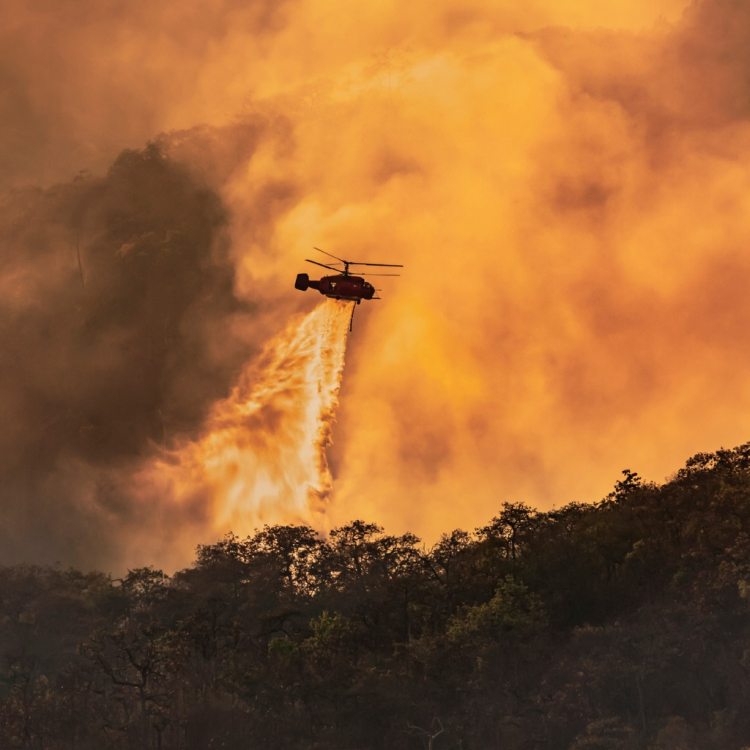Quantifying physical risk from climate change: how cat models can help

Peter Sousounis, Director of Climate Change Research, AIR Worldwide, explains how catastrophe risk models can help quantify climate risks with long- and short-term horizons.
Insurers typically rely on catastrophe models to help them understand the risk associated with underwriting, setting rates, maintaining a reserve, and other relevant aspects. Insurers and other industries are becoming increasingly concerned about how climate change could disrupt their business.
This article provides an overview of what various industries’ climate change concerns are and what type of information they would like to address those concerns. It explains how catastrophe models can help—by giving quantitative information to address corporate concerns on short- and long-time horizons. It also describes how catastrophe (cat) model developers now need to look differently at the various types of data that inform the models. How cat model-based approaches can be used to understand climate change risk in the longer term is also described. Finally, a brief discussion on the uncertainty and limitations involved in using catastrophe models and how they and other aspects that can be addressed to better understand future risk will be provided.
Industry concerns in the short term
Industry concerns are rooted in three areas. The first stems from the perception that cat models do not account for climate change because: a) climate change has resulted in a significant alteration to extreme weather (e.g., frequency and intensity); and b) catastrophe models are built on a long time-series of historical data that does not adequately account for recent changes.
The second concern is that a straightforward method, such as a scaling factor, may not exist to adjust cat models to better account for the impacts of climate change. The third concern is that the recent extreme weather over the last several years (hurricanes/typhoons, wildfires/bushfires) has been driven by climate change and it will continue to get worse. In addition, there is concern about what the long-term may bring and how important decisions about that more distant future can be made now.

Concerns in the long term for government, insurance and other industries
Understanding how climate change may impact extreme weather by 2100 is a concern to both governments that wish to develop long-term policies and build infrastructure and private industries looking to develop manufacturing sites and corporate facilities and build their supply chain. Longer-time horizons are also becoming a concern to the insurance industry from an investment/assets side as well as from an insurability standpoint.
The investment aspect carries with it such climate change–related concerns as transition risk and liability risk, in addition to the expected physical risk. Transition risk is a concern to industries in general, as they move from higher to lower carbon investments; financial outcomes resulting from investment in rapidly evolving technologies are highly uncertain. Liability risk is also a concern, especially to insurance companies that provide coverage to the fossil fuel industry because both parties could get sued. Physical risk is the most typical concern, however, as it relates to the physical damage to structures, contents, and business interruption from extreme weather.
Catastrophe models in the here and now
Catastrophe models have been an important tool for the insurance industry since AIR Worldwide was founded in 1987, but other industries are slowly realizing they can benefit from them as well. Users of cat models have always asked questions of model vendors, such as what are the assumptions, data, methodology, etc., that inform the model. This line of questioning has widened recently because of climate change. Specifically, there are questions related to the vintage of data informing cat models, stemming from the perception that a large amount of data from many decades ago is used in building the models and climate change is rendering that data obsolete. For example, hurricane activity in the past may have been based on ocean surface temperatures from 26° to 30° Celsius, but now that the range is more typically 27°–31° C, is the historical data useful? The short answer is yes.
Catastrophe models are a useful tool for quantifying a risk influenced by climate change—especially when some extra precautions are taken. For starters, it’s important to understand that not all weather-related extreme events can be attributed to the influence of climate change. From a cat model development standpoint, it is necessary to exercise scientific due diligence by reviewing literature and supplementing that with internal analyses that can inform the updating of a cat model. Answering questions such as “Is there a trend?”; “If there is a trend, then is it physically based?”; “If it is physically based, is it from climate change or from climate variability?”; and “If it is from climate change, then is it statistically significant?” are paramount when considering how data going into the model should be handled. How the data is de-trended, how much data is used, and what other information is used become critical considerations.
Climate change may question the validity of the adage, “There’s no such thing as too much data”; validity is maintained, however, in the way that the data is used. Long time series are useful for defining climate variability, but it is also important to evaluate if and how the climate variability itself is changing. After appropriately de-trending data to better reflect the recent past and defining climate behavior in terms of distributions that can accommodate possible outcomes not yet observed, it is important to demonstrate that the model reflects the current climate. Although this is what a cat model is built to do, this capability nevertheless must be demonstrated to give users confidence. Even if data from 1900 through the present were used, it is important to highlight the performance of the model benchmarked against the last 20 to 30 years.
Catastrophe models for tomorrow

Industry concerns on longer time horizons can also be addressed using cat models. Ideally this would involve using future information either about how the peril itself will manifest or how the environment that leads to it will. Because of current resolution constraints in general circulation models (GCMs), only the latter is typically achievable. Two shortcomings of this approach are that a conducive environment does not guarantee the phenomenon will actually happen or that it will manifest in the same way.
Weather generators can be used to downscale coarse versions of GCM weather, but they are limited also. In some instances, however, cat models of today can be repurposed into cat models for tomorrow—especially on time horizons of 10 to 30 years. Because climate change happens slowly, relative to interannual variability, today’s models have events that could occur in the future albeit with different frequencies.
Thus, by appropriately resampling a current catalog of events it is possible to create a catalog reflecting future climate. Resampling must be accomplished according to a target that reflects a view of how activity will change. Benefits include a relatively speedy process and automatically available loss information, once the target is defined and the resampling algorithm created. AIR has used this technique across a variety of perils (e.g., UK Windstorms Study 2017, US Hurricane Study 2020). Depending on the size of the catalog being resampled, longer time horizons with more extreme climate scenarios can also be addressed.
Climate Change and Uncertainty
By definition, cat models must account for uncertainty. The extreme events that occur next year should be contained within the model (catalog) with appropriate frequency and other characteristics. But other similar or not-so-similar versions of these events should also be—to the extent they can occur. Climate change is making accounting for uncertainty more challenging.
Non-stationary time series make it difficult to account for what may happen even in the near-term future, but the magnitude of climate change uncertainty has to be gauged against climate variability uncertainty. On longer time horizons, uncertainty deriving from not knowing which Representative Concentration Pathway (RCP) we will ultimately find ourselves on may account for the largest uncertainty.
To that end it is helpful to consider a range of scenarios. While the probability of any one RCP scenario occurring cannot be quantified because they are not forecasts, the risk information from a range of RCP scenarios will help inform decisions. Climate change is an evolving risk, but tools exist to help quantify it. These tools can be augmented with extended capability to help industries understand how risk can be mitigated by performing cost-benefit analyses (e.g., building higher seawalls, stricter building codes) and other sensitivity studies. Leveraging the strategies described here has the potential to address myriad concerns as well as help to improve catastrophe models for future applications.
Editor’s note: Peter was a speaker at Airmic’s recent Climate Change Forum, held in December. All of the content from this virtual event is available online for Airmic members. Click here to check it out.

Peter Sousounis, Director of Climate Change Research, AIR Worldwide
